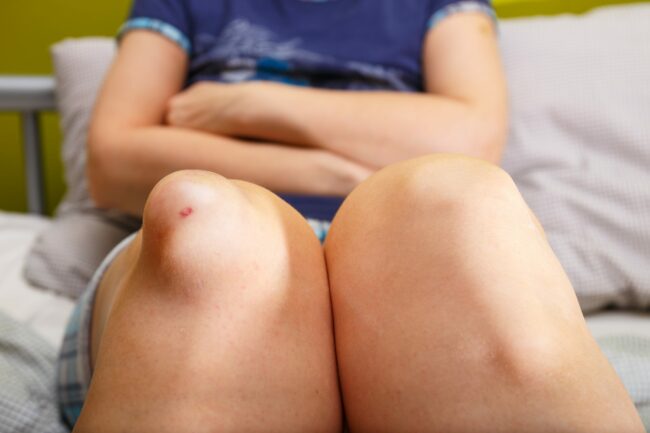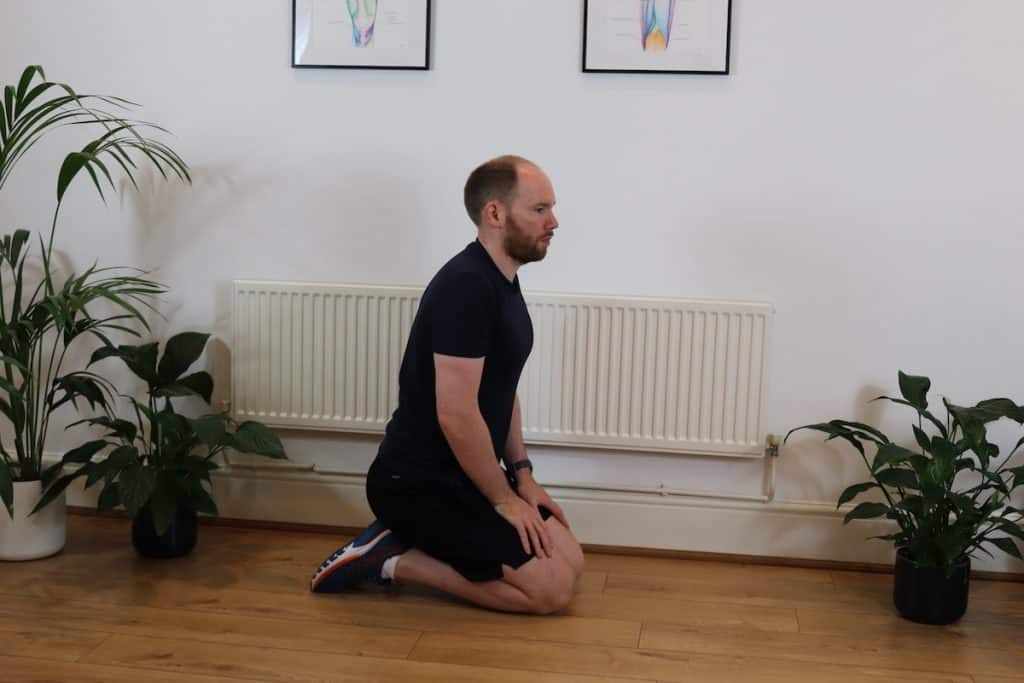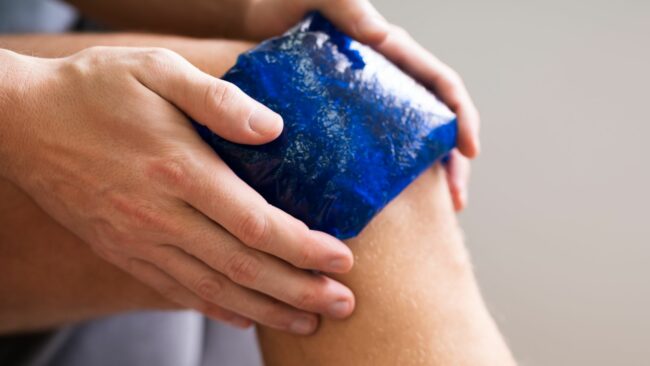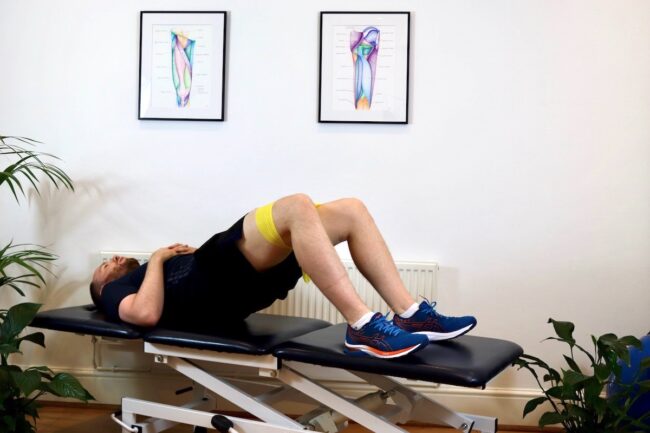Hoffa’s Fat Pad
Read More >
Housemaid’s knee is also known as prepatellar bursitis. It causes pain at the front of the knee. It was common among housemaids due to the compression on their knees from kneeling on hard floors.
Bursae protect our muscles, tendons, and skin from friction or pressure from bones and joints. There are over 150 bursa in the body.
The anatomy of a bursa is similar to that of a deflated balloon. They are a double-membraned sacks that, in a normal, healthy state, are flat. When inflamed, they become fluid-filled and swollen.
The prepatellar bursa is at the front of the knee, in front of the knee cap. It sits superficially, just under the skin. It protects the skin at the front of the knee from being damaged by the movement of the kneecap. When a bursa becomes inflamed, the condition is called bursitis. Therefore, prepatellar bursitis is an inflammation of the prepatellar bursa.
Another cause of pain at the front of the knee is Pes Anserine Bursitis, which is typically felt more to the inside of the knee and lower than the kneecap.


The most notable symptom is the swelling at the front of the knee. Which can be significant. It is only located on top of the kneecap and does not spread. The front of the knee will look significantly raised, while the rest of the knee looks normal.
Usually, there isn’t any bruising, but the area may look red. The knee can feel warm and tender to touch at the front or to kneel on.
Generally, pain levels are not high, and most people have low or no pain at rest. This is often described as an ache or tenderness.
In moderate and severe cases, due to greater swelling, it will be painful to bend the knee.
The prepatellar bursa is commonly caused by excessive pressure on the knee cap. Repeated kneeling is the most common cause of inflammation of the prepatellar bursa. Therefore it is more common for certain jobs just as carpet layers, plumbers and cleaners.
In sports, wrestling has a higher risk of developing prepatellar bursitis. It is the most common knee injury for this group of athletes.
The 4 most common causes of developing prepatellar bursitis:

There are three types of prepatellar bursitis:

Treatment should address the specific cause of the bursitis. It will be necessary to stop or significantly reduce the activities that have contributed to its development. This may include not kneeling or resting from sports.
Regularly apply ice, take anti-inflammatory medication, or use a brace. Raising your legs when resting or having frequent massages are effective treatments. They can manage pain and reduce the swelling in the bursa.
Some forms of taping, stretching and light mobility exercises can also help with this.
In more severe cases, draining the bursa may be necessary and antibiotic treatments may be necessary in infected cases. Septic bursitis was previously treated by removing the bursa. However, research has shown that conservative treatments have better outcomes in these cases.

Strengthening exercises or stretches may be recommended by a physical therapist if a contributing factor is muscle weakness or tightness.
Rehabilitation exercises include stretching the quadriceps, hamstring, and calf muscles. In addition, strengthening the posterior chain of muscles, including the glutes, hamstrings, and calves, is helpful. Exercises such as bridges, clams, and hip abduction are a good way to build strength without aggravating symptoms.
In most cases, recovery is straightforward if the advice of ice, medication, and rest is followed. Usually, cases resolve within 2-4 weeks. It can be a longer recovery in chronic cases, especially when kneeling is a necessary and unavoidable part of life for the individual.
It is essential to have bursitis assessed, and that signs of infection are closely monitored. These include feeling unwell, raised temperature, sweating, and chills. If an infection develops, it must be treated quickly to ensure it is resolved. It is advised to go to the hospital as soon as possible. In severe cases, infection of the bursa can lead to sepsis, which can be life-threatening.
While in most cases, bursitis is not serious, if it becomes infected, it can be dangerous.
This article is written by James McCormack, a Lower Limb Specialist who is an expert in treating Housemaid’s Knee.
This is not medical advice. We recommend a consultation with a medical professional such as James McCormack if you are experiencing any of the symptoms discussed in this article. James offers Online Physiotherapy Appointments weekly and face-to-face appointments in his London clinic.